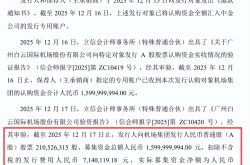"Everyone is selling cars at a loss, so how can we talk about economies of scale?"
![]() 09/18 2024
09/18 2024
![]() 492
492

Introduction
Economies of scale certainly exist, but the premise is that the company must survive long enough to achieve them.
As the price war in the automotive market intensifies, everyone is talking about "reducing costs and increasing efficiency." In this increasingly difficult period, it seems that all automakers are pursuing greater market share, even if it means selling cars at a loss.
The closed-loop logic behind this is that once enough cars are sold, economies of scale will spread out the costs, ultimately leading to profitability.
This anticipation of the future, coupled with the anxiety that "if you don't grab your share of the pie now, you won't be at the table later," has driven more automakers down this "obviously correct" path.
However, many companies remain skeptical and dismissive of economies of scale. When the market is engaging in a no-holds-barred price war and automakers are losing money on every car they sell, doesn't selling more just mean losing more? As one executive from a joint venture automaker once put it:
"I made $2.1 billion globally in the first quarter of this year, so I can afford to subsidize the Chinese market. Can your local companies afford to play this game with their own funds? You'll burn out first, and I'll be here waiting to swoop in and grab your market share."

Indeed, the market environment is ever-changing. Some are willing to engage in price wars, while others oppose them. It's simply a matter of market choice. But the biggest fear is uncontrolled "involution," where inferior products drive out the good, automakers prioritize gimmicks over product refinement, and consumers ultimately end up paying for shoddy products.
Don't rush to disagree. After full market competition, things will indeed get ugly, and some players will have to fall by the wayside.
XPeng doesn't want to die, so MONA 03 enters the market at a low price. NIO doesn't want to die, so Letao L60 is gearing up. Leopower, Nezha, and others don't want to die either, so they're all testing the lower end of the market.
Whether they recognize the importance of economies of scale or not is irrelevant, because in the end, the winner takes all. But they surely understand that those who make mistakes will be devoured and have no chance of a comeback.
Today, the Chinese automotive market is fiercely competitive, especially for new automakers with weak foundations and low brand recognition, who now stand at a crossroads.
Do they prioritize economies of scale to boost popularity, or do they focus on profits to safeguard their financial health? Time is running out for them to make a decision.
Can lower prices lead to economies of scale?
Can the logic of initially losing money to grab market share and then scaling up to reduce costs and increase efficiency work in the long run?
In economics, economies of scale are derived from the law of diminishing marginal costs. A company's costs include fixed and variable costs. As production scales up, the unit cost per product decreases, leading to an increase in profit margins.
In the automotive market, this simply means that as automakers sell more cars, the cost of developing each car is spread out, allowing them to make money through economies of scale and pass on savings to consumers.

While it's true that economies of scale can help spread out costs, the problem arises when automakers are constantly testing the price floor and losing money on every car they sell. In this context, economies of scale begin to "deform."
Imagine selling a car below cost, losing money on every unit sold. What good is selling more cars if each one is a loss? As production scales up, issues like slow information transmission, distorted information, and bureaucratic management can actually lead to "diseconomies of scale."
"Many brands prioritize sales volume over profit, even if it means selling below the cost of raw materials. This could be due to other goals, such as going public to raise funds or satisfying local government demands for factories to reach a certain production scale and create jobs."
In response to the prevalent notion of economies of scale, Li Ruifeng, Chief Growth Officer (CGO) of Great Wall Motor, said bluntly, "If it costs $150,000 to produce a car but you sell it for $100,000, filling the gap with capital financing and government subsidies is like drinking poison to quench thirst."

Indeed, compared to selling cars at a loss, Great Wall Motor prefers to make a profit the honest way. This stubbornness has led to a focus on niche markets like off-road vehicles and pickup trucks, but it has also meant losing market share to competitors and missing out on potential revenue.
But isn't profitability essential for the healthy development of a company?
Great Wall Motor's first-half financial report shows a net profit of RMB 7.079 billion, up 419.99% year-on-year; gross profit of RMB 18.962 billion, up 60.82% year-on-year; average revenue per vehicle of RMB 164,800, up RMB 29,900 year-on-year; and net profit per vehicle of RMB 12,800, up RMB 10,100 year-on-year.
In contrast, new automakers that sell cars at a loss may lack confidence.

Undoubtedly, traditional automakers and joint ventures have the financial muscle to engage in price wars. First-half data shows that BYD, Geely, and Great Wall Motor rank among the top three in profitability, while new automakers like XPeng have unsurprisingly incurred losses.
It's clear that automakers that rely solely on price cuts to sell cars won't go far. And if an automaker isn't genuinely committed to building quality cars, they deserve to be weeded out.
It's crucial to understand that automakers looking to reduce prices and achieve economies of scale must have the financial strength and strategic vision to pull it off. Otherwise, they risk eroding their long-built brand equity.
Beware of 'Survivorship Bias'
There are several key points in China's current automotive market: intense competition and price wars, difficulty selling high-end electric vehicles, the looming battle for autonomous driving technology, the rise of extended-range electric vehicles (EREVs), and CEOs engaging in livestream marketing...
With the advent of the new energy vehicle era, the entry of powerful players like Huawei and Xiaomi has sparked new excitement in the market. But is price competition always the best strategy? Is autonomous driving the way forward? Are EREVs the future of new energy vehicles? Can CEO livestreams translate into sales?

In November 2023, Li Xiang, Chairman of Lixiang One, publicly stated that Chinese automakers still producing multi-speed PHEV models would shift to extended-range technology within the next one to two years. This prediction is now coming true. New automakers like Lixiang One, AITO, Leapmotor, and AVATR, as well as traditional automakers like Geely and Great Wall Motor, are all making the transition, some faster than others.
Apart from addressing range anxiety and charging concerns for consumers, another consideration for EREVs is cost reduction.
In the past, the high cost of batteries was a major challenge in the new energy vehicle market, with even the Chairman of GAC Group, Zeng Qinghong, publicly feuding with CATL over battery prices. As a result, EREVs, with their reduced battery costs, have capitalized on the new energy vehicle trend.
But the question remains: Are the sales successes of Lixiang One, AITO, and Leapmotor solely attributable to their EREV technology?

I believe not.
Some have joked that the fridge, TV, and comfy seats are the real cutting-edge technology. But consumers aren't fools; they can tell the difference between a well-appointed interior and a bare-bones one. And when it comes to a car's handling, mechanical quality, and overall build, shouldn't these be standard expectations?
The crux of the matter lies in brand building.
In the past, Lixiang One was known for its family-friendly image, NIO for its high-quality service, and XPeng for its intelligent features. Now, XPeng seems to be falling behind as its competitors catch up in terms of intelligence.
AITO's success can be attributed in part to Huawei's brand power, while Xiaomi's strong sales reflect the charisma of its CEO, Lei Jun.

Ultimately, the competition in the automotive market boils down to brand competition. The only way to capture market share is not through price cuts but by genuinely building and owning a strong brand.
Why is this?
Simply put, people's needs transcend any single level of Maslow's hierarchy. As technology, society, and the market evolve, people's aspirations for cars go beyond mere product features. They seek a brand spirit that resonates with them, providing a sense of self-identity and social recognition.
The so-called "survivors" we see today have all accumulated brand equity through various means, continuously nurturing and expanding it to capture the hearts and minds of consumers, earning their loyalty and recognition.
And as we've discussed at length, economies of scale are even more potent when bolstered by brand equity, leading to exponential growth and effectiveness.
Without consumer recognition and loyalty, selling more cars is merely a temporary fix, destined to be swept away by the tides of time.





